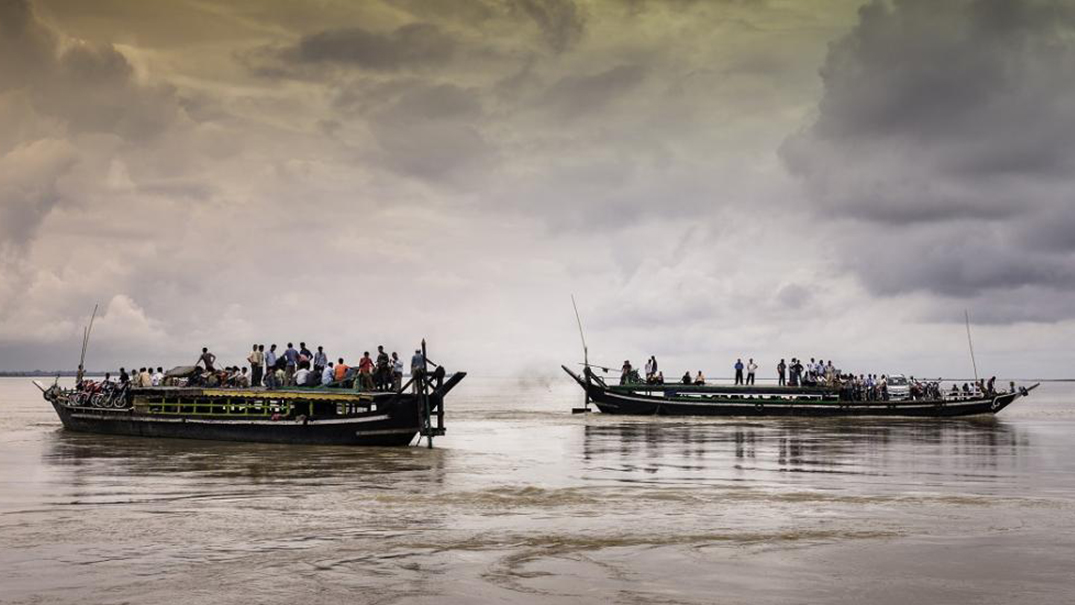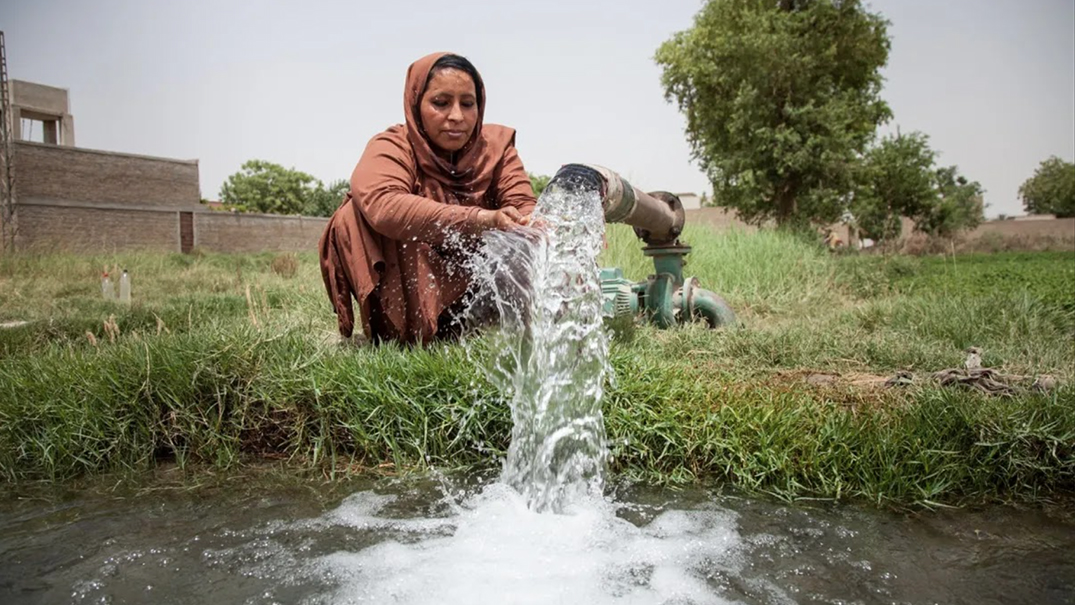South Asia is facing many impacts and cascading risks from climate change. Rising heat, shifting monsoon patterns, unpredictable weather, and longer periods of drought are just a few examples. The recent heat waves in the spring and summer of 2022 were some of the region’s most extreme in the last several years. Pakistan is currently bearing the brunt of one of the worst floods in the country, where over 1600 people have died, and close to a third of the country is underwater. A 2020 study by the Ministry of Earth Sciences in India forecasted that India will become drier and hotter in the coming decades with longer monsoon periods.
Examining the arc from Pakistan through Northern India, Nepal, Bhutan, and Bangladesh, over 500 million people are affected directly or indirectly by climate-related incidences. They are vulnerable to disasters exacerbated by poor human decision-making. This geographical arc also represents some of the largest water bodies in the region, from the Indus to the Brahmaputra, where growing water insecurity is closely intertwined with climate change.
Water bodies and changes in the climate and ecosystems do not respect man-made borders — and any natural event will have consequences regionally. In addition, as we slowly move out of the COVID-19 pandemic, the world is dealing with curtailed economic growth, a looming recession, and a growing food and energy crisis.
What does this mean for South Asia? More importantly, how are the region’s water resources being impacted by climate change?
THE IMPACT ON SOUTH ASIA’S WATER
Climate vulnerabilities are linked to water resources and are ultimately a security threat. Depleting and contaminated water resources, both surface and ground, will increase tensions between neighbors in the region and within countries. In addition, there are broader consequences from food production issues, health, and energy security to displacement and health concerns, all culminating in a larger human security and development regression.
Migration within countries and across borders due to climate change can also sharpen existing grievances and expose the region’s many fault lines, as seen in Bangladesh. There is also likely to be increased stress on urban centers in the region, where South Asia, especially India, has some of the fastest-growing cities in the world: Kerala, Malappuram, Kozhikode, and Kollam, are in the top ten, while others, including Surat and Tiruppur, feature in the top 30. A 2020 report by the World Wide Fund for Nature stated that 8 Pakistani and 30 Indian cities will face a “grave water risk” by 2050; this will likely be sooner and affect more cities. Rapid urbanization, therefore, is a contributing factor to climate change risks.
“ALTHOUGH WATER MIGHT NOT ALWAYS BE A CAUSE OF CONFLICT — IN FACT, IT RARELY IS — IT CAN BE A THREAT MULTIPLIER AND BE BOTH A CAUSE AND EFFECT OF CLIMATE CHANGE”.
In South Asia, the climate crisis is essentially a water issue. Longer, heavier monsoons, increasing temperatures, and prolonged drought affect water quality, overwhelm sewage systems and urban infrastructure, inundate agricultural land, or render them dry and unusable, all of which the region is currently experiencing. The correlations are sometimes direct, where increasing temperatures will lead to heavier monsoons over time, thus resulting in more floods and flood-related disasters. This is currently the case in Pakistan and was also seen in Bengaluru in September 2022, where localized weather was affected by rising temperatures.
Increasing temperatures also affect the rate of glacial melt along the Tibet region, popularly known as the third pole. The source of some of the largest rivers in South Asia, changes in the glacial melt will result in changes in the river basin and increased glacial lake outburst floods (also called GLOFs), affecting human and environmental security, energy security, and infrastructure.
The long-term effects of such events, including contamination of water sources, changing agricultural landscape, and conflict over resources, are varied. With too much or too little water, we can no longer ignore the links between climate change and water resources, especially in a region where water resources are mismanaged, prone to overuse, and highly emotive and securitized. Although water might not always be a cause of conflict — in fact, it rarely is — it can be a threat multiplier and be both a cause and effect of climate change.
WHAT’S MISSING FROM THE DISCOURSE
The climate change discourse in India is primarily centered around curbing emissions, bringing a greater push and focus on clean energy, net-zero targets, adaptation mechanisms, and the need for a more robust discussion on responsibility and climate finance. The devasting floods in Pakistan have underscored all this, especially the causality and the need for greater accountability by high emitters. However, what is often missing in this discourse is the inclusion of the most vulnerable communities, more robust mitigation measures, and the relationship of water in the larger climate action plan.
Forests, specifically rainforests such as the Amazon, have always been championed as important carbon sinks that will aid in our fight against rising global warming. Unfortunately, studies show that these may not have the impact we hope for. While we cannot ignore the importance of maintaining our forests — the benefits are multifold — we often miss out on other critical nature-based solutions such as wetlands and marshes as important carbons sinks, biodiversity zones, and natural flood arresters.
Wetlands also aid in naturally cleaning underground water systems, especially in urban areas. Improving sanitation and wastewater systems ensures clean and safe water to the population, which improves health and livelihoods, reduces emissions from water bodies, strengthens the ecosystems and water cycles, and ultimately works as both a mitigation and adaptation strategy in the climate conversation. Such solutions not only make populations and ecosystems more resilient to climate change but also work as measures to reduce stress on the environment in the long term.
Increased cooperation on glaciers and critical lakes in the high Himalayan Hindu-Kush region (already underway to a certain extent by China, India, and other partners), early warning systems, and other forms of cooperation on climate action that are not necessarily contentious or political, also need to be considered and operationalized.
While water sharing and cooperation on transboundary rivers is unlikely at the moment, existing areas of collaboration, such as monsoon-related data sharing between India and China or China and Bangladesh, need to be scaled up and broadened. With growing evidence of climate risks and the impact on the region of a warming planet, there is an urgent need to understand — in a deeper, more nuanced manner — the intricate, varied connections between water security and climate change. There is a dire need for small, easy-to-implement solutions that work in the short term, and innovative, bold regional solutions with a strong regionalism element.
TRANSLATING WORDS INTO ACTIONS
As the discussion and debate on curbing emissions to hold warming to below 20C, with global targets aimed at 2030, 2050, and 2060, we need a greater focus on impacts that are already upon us, especially those that deal with the water cycles and water resources. There is growing recognition on the global stage, within UN systems, Intergovernmental Panel on Climate Change reports, and UN Security Council discussions. However, how that translates to action and reaction in South Asia and the linkages between climate change and growing hydro-insecurity needs sustained attention.
As one of the world’s water stress hotspots and a region with growing development ambition, increasing investment in climate adaptation integrated with local, national, and regional water management is paramount. Dealing with climate change, both from the adaptation and mitigation perspectives, cannot be separated from dealing with water scarcity and hydro-insecurity.
Ambika Vishwanath is the Founder Director of Kubernein Initiative and a global water and diplomacy expert.
This article was originally published on Inkstick Media in September 2022.



